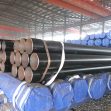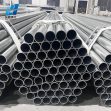Curtain wall facade design can lead to healthier, more comfortable hospitals
In the modern times, curtain wall facade play a crucial role in hospital buildings with integration of more windows and doors, curtain walls, and shading systems to bring in more natural light while still managing the unique challenges of healthcare. There are a few distinctive advantages of using curtain walls in creating a healthy and productive environment as follows:

•Daylighting: The health effects of exposure to natural lighting are long proven. Architects can combine entrances, windows, curtain wall glazing, overhead glazing, and light shelves to allow light to infiltrate farther into the building and blur the line between indoors and out.
•Air quality: Along with mechanicals, windows can provide controllable ventilation to improve indoor air quality, which increases comfort.
•Accessibility: Ensuring accessibility in entry systems includes adequate, clear openings; elimination of obstructions; properly positioned operators; and power assistance.
•Protection and security: Protecting what’s inside requires thoughtful specification of the curtain wall structures in applications. This includes natural surveillance and line of sight that can increase the ability of officials to properly monitor entrances, exits, and parking lots, security hardware, and impact resistance against manmade and natural threats.
•Energy efficiency and thermal performance: At the same time, today’s healthcare buildings also need to deliver optimum energy performance without compromising aesthetics. Tools for improving efficiencies in the facade include solar shades, which reduce solar heat gain and shade interiors; shades and shadecloths to reduce solar heat gain when needed and/or link into building controls for actuations and automation; light shelves that reflect sunlight deeper into the interior of a building; solar shades with PV; energy-efficient glass that combines coatings and insulation to boost U-values and R-values; and thermal breaks in window, door, and curtain wall framing to improve U-values, prevent energy loss, and help avoid condensation.
In recent years, aluminium curtain wall system has been widely used in healthcare projects. Especially thermally broken aluminum frames are one way to improve insulation in windows. These frames are designed with a resistant barrier that makes it more difficult for heat to flow out of the hospital facility. Furthermore, structural glass curtain walls are involved in structural materials such as rubber gaskets, sealant, metal connections, and insulation to ensure that the wall doesn’t compromise the energy efficiency of the building. By taking into account the material used when building the wall, there can be energy savings due to reduced heating and cooling loads on the building.
Tel: +86 18202256900 Email: steel@fwssteel.com










